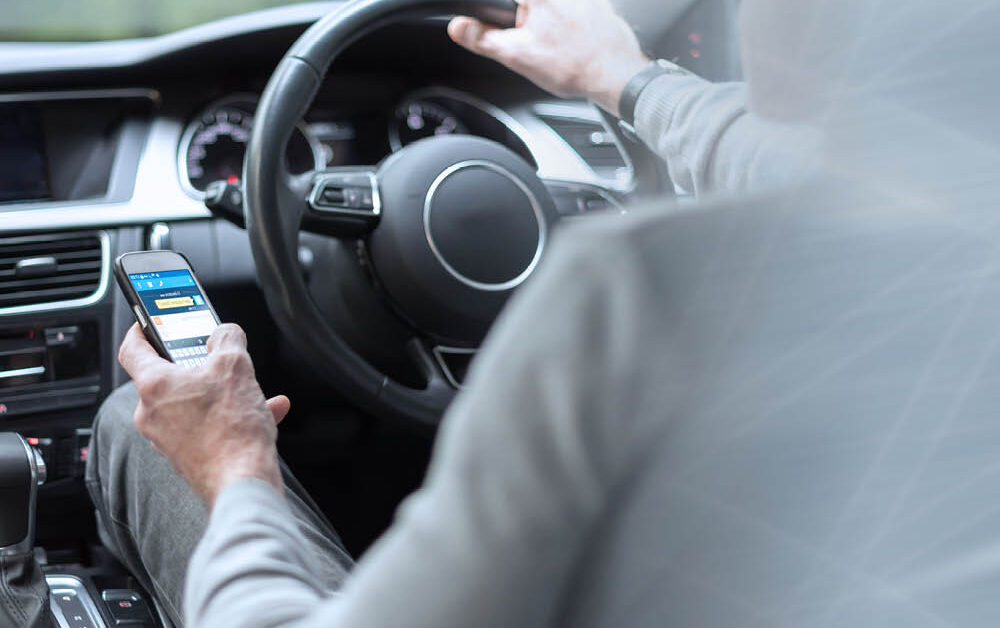
This is Home Fest 2022
March 2022
10 Projects to “Just Imagine” Southwest Louisiana
March 2022Dangerous Driving Habits
April is Distracted Driving Awareness Month
by Kristy Como Armand
Multitasking. It’s become the norm for many of us, whether we’re answering an email while on the phone at work, scrolling through text messages while watching tv, or reading on the treadmill.
In many cases, juggling tasks can improve efficiency, enabling us to get more done in less time. But in other situations, multitasking just distracts people, forcing us to be less efficient at each of the tasks we’re attempting to accomplish.
Driving is one of these situations. According to studies conducted by the National Highway Traffic Safety Administration (NHTSA), some form of driver distraction is a contributing factor in 80 percent of all vehicle crashes.
John Floyd, Driving Instructor with the Safety Council of Southwest Louisiana, says multitasking behind the wheel is one of the most dangerous of all dangerous driving habits. “You cannot drive safely unless the task of driving has your full attention. Any non-driving activity you engage in is a potential distraction and increases your risk of crashing, putting you, your passengers, and others on the road in danger.”
Floyd explains that there are different types of distractions: visual – taking your eye off the road; manual – taking your hands off the wheel; or cognitive – taking your mind off driving.
Texting is one of the most common, and severe, impediments identified in fatal crashes, combining visual, manual, and cognitive distractions. A new report from the Behavioral Traffic Safety Cooperative Research Program found that when a person reads a text while driving, his or her eyes are off the road for an average of five seconds. At 55 miles per hour, that’s like driving the length of a football field while blindfolded. “This is why even reading texts while driving should be avoided completely,” stresses Floyd.
Floyd highlights other common activities and situations he has seen in 25+ years of instructing that lead to driver distraction and vehicle accidents:
Phone Calls
Many people view drive time as the ideal time to catch up on phone calls. The problem is that it’s very difficult to keep your eyes on the road while dialing a cell phone, or your full attention on driving while talking on a cell phone, even if you use the hands-free function.
Drowsiness
Drowsiness is a distraction that causes over 80,000 vehicle crashes each year, and is responsible for 2.5% of accident fatalities, according to the NHTSA. A survey by the AAA Traffic Safety Foundation found that one in four drivers have struggled to stay awake while driving. “The good news is that drowsy driving is preventable,” says Floyd. “Getting adequate sleep will help, as well as avoiding long trips during peak sleepiness periods, which have been identified as late afternoon and midnight – 6:00 a.m.”
Eating
It may be tempting to have a snack or even a meal on-the-go while driving, but this can be dangerous. When you are behind the wheel of your vehicle, your full attention should be on what is happening around you on the road. Trying to eat while keeping control of your car is a difficult, if not impossible task that should be avoided whenever possible.
Floyd says there are many other distractions that can take a driver’s attention from the task of driving – everything from daydreaming to talking to a passenger or adjusting the temperature. “You always need to be alert and resist distractions while driving, and even more importantly, don’t let distractions become a habit. If you are guilty of any dangerous driving habits, you can make changes to improve them. Being aware of what you’re doing when you are behind the wheel is the first step. Make a point of focusing only on the road when you are driving, and if you need to make a call, text, eat, or anything else, pull over first.”
Distractions by the Numbers:
Consumer Reports recently conducted a nationally representative phone survey to assess distracted-driver behavior and opinions. In the survey of licensed drivers who own a smartphone, 52 percent admitted to engaging in distracting activities while driving.
What Are the Distractions?
41% use hands to send a text.
37% use hands to play music on a smartphone.
20% use hands to access a web browser or to compose, send, or read email.
8% watch videos on their phone while driving.
Who’s the Most Distracted?
Men are more likely than women to engage in distracting behavior.
More than twice as many men watch videos while driving.
Millennials (18 to 36) and Gen Xers (37 to 52) were more likely than Baby Boomers to engage in distracting behavior.






